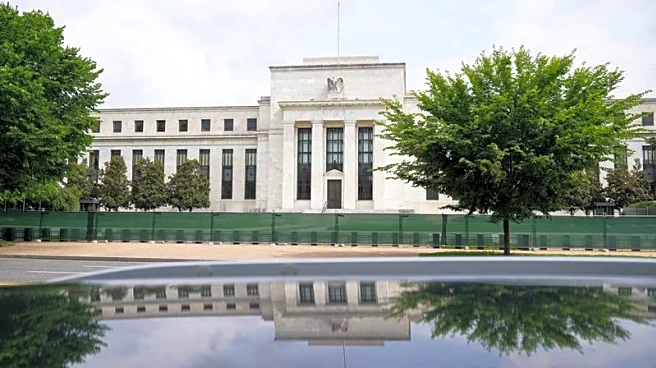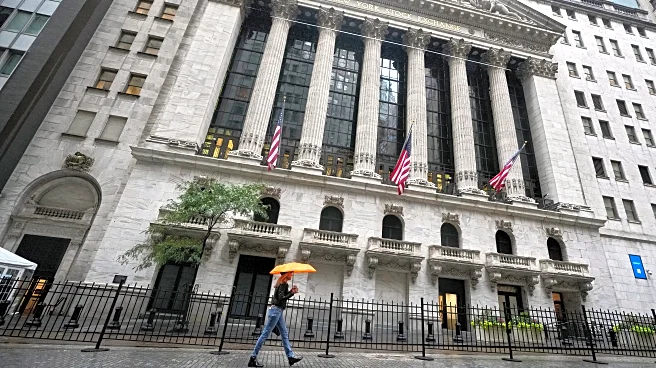What's Happening?
The U.S. Federal Reserve is anticipated to reduce interest rates by a quarter percentage point at its upcoming policy meeting on October 28-29. This expectation is largely due to weak job growth and the
absence of key economic data, a result of the ongoing government shutdown. Financial markets are heavily betting on this rate cut, with Fed futures indicating a 95% probability. Fed officials, including Governors Christopher Waller and Stephen Miran, have signaled a dovish stance, citing concerns over a weakening labor market and emerging risks such as trade shocks and financial market strain. Fed Chair Jerome Powell has also suggested that rate cuts are possible if job market conditions continue to deteriorate.
Why It's Important?
The potential rate cut by the Federal Reserve is significant as it reflects the central bank's response to current economic challenges, including a softening labor market and delayed economic data due to the government shutdown. A rate cut could provide a boost to the economy by lowering borrowing costs, encouraging spending and investment. However, it also highlights underlying economic vulnerabilities, such as trade tensions and financial market instability. The decision could impact various stakeholders, including businesses, investors, and consumers, by influencing interest rates, stock market performance, and overall economic confidence.
What's Next?
If the Federal Reserve proceeds with the rate cut, it may lead to further adjustments in monetary policy depending on future economic indicators. Stakeholders will closely monitor upcoming data releases, such as the September Consumer Price Index report, to gauge the Fed's next moves. Additionally, any developments in U.S.-China trade relations or changes in global economic conditions could influence the Fed's policy decisions. Market participants will be attentive to Fed communications and economic data to assess the likelihood of further rate cuts in the coming months.
Beyond the Headlines
The anticipated rate cut underscores the delicate balance the Federal Reserve must maintain between supporting economic growth and managing inflationary pressures. While a rate cut could stimulate the economy, it also raises concerns about potential asset bubbles and financial market imbalances. The Fed's actions will be scrutinized for their long-term implications on economic stability and the effectiveness of monetary policy in addressing structural economic issues.













